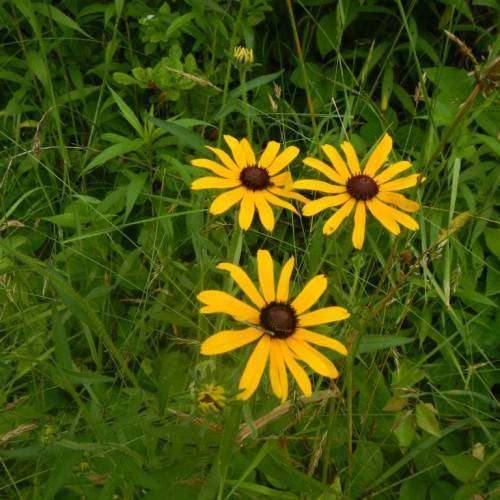
Appalachian black-eyed Susan
Rudbeckia fulgida var. umbrosa
Cycle:
Herbaceous Perennial
Watering:
Minimum
Hardiness Zone:
3 - 9
Flowers:
Flowers
Sun:
Full sun
Fruits:
Fruits Ready In Fall
Edible:
Yes
Leaf:
Yes
Growth Rate:
Low
Maintenance:
Low
Drought Tolerant:
Yes
Salt Tolerant:
Yes
Care Level:
Medium
watering
Appalachian black-eyed Susan (Rudbeckia fulgida var. umbrosa) should be watered when the top inch of soil feels dry to the touch. Generally, you should water the plant deeply once a week in well-draining soil. During hot, dry periods, you may have to water the plant more often. It is important to avoid over-watering the plant, as this could lead to root rot and other fungal diseases. In areas of high humidity, such as the Appalachian Mountains, you may wish to water the plant every 5 to 7 days. Make sure to water the plant in the morning so that its foliage has the opportunity to dry during the day.
sunlight
Appalachian black-eyed Susan (Rudbeckia fulgida var. umbrosa) grows best in full sun, which means it needs at least 6 to 8 hours of direct sunlight each day. While it can tolerate some shade, the plant produces the most vibrant blooms when given the optimum amount of sun. This species is also very heat tolerant, enjoying temperatures as high as 85 degrees. To ensure your Appalachian black-eyed Susan thrives, it's important to keep it in a location that receives ample direct sunlight.
pruning
Pruning for the Appalachian Black-eyed Susan should occur annually in late winter or early spring, after they have gone dormant. It is best to wait until the coldest temperatures are past before pruning. Remove any damaged stems or branches, as well as any stems that are dead or diseased. Cut back any branches or stems that are too long or too congested and any possible overcrowding. Prune back the stems by a third or more to improve air circulation and increase the chances of fuller and denser flowering. Also cut back the stems to a lower height, usually 4-6 inches, to help create a fuller, more compact appearance.
